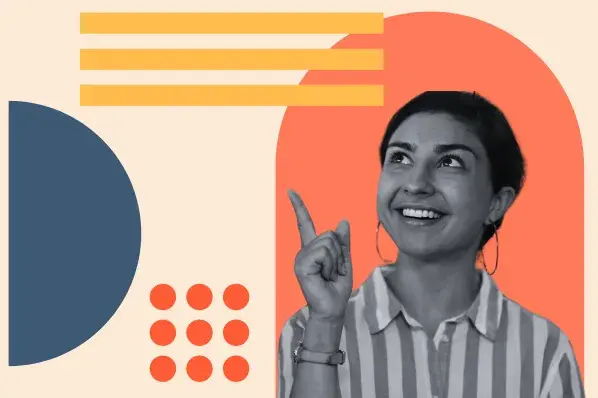An Introduction to OpenAI’s DALL-E 2 AI
Text to image AI has been in the news lately, especially DALL-E 2 AI. Here’s everything you need to know about it, including how it works…

If you frequent the internet, you’ve likely seen or heard about artificial intelligence (AI) image generation, text to image AI or DALL-E AI lately. But if you’re still not sure exactly what all the fuss is about, that’s alright!
We’re living in extraordinary times in terms of technology. Every day there seems to be a new technological revelation that makes waves, imposes indirect promise, strikes fear in some and excitement in others. Lately, that technology is text to image AI, more specifically, an artificial intelligence called DALL-E.
But what exactly is this “new” tech, what is it capable of and where did it come from?
What is DALL-E 2 AI?
DALL-E 2 is a new AI system and the successor to OpenAI’s original DALL-E that debuted in January 2021. The new version of the program is capable of producing high-quality, realistic images and art based solely on descriptive text as inputted by a user — with up to 4x greater resolution than the original tech. And, it’s also capable of manipulating an existing image in order to add new, interesting elements. Those realistic edits are just as impressive as the fully generated images, too.
The name DALL-E is meant to be a portmanteau of renowned Spanish surrealist artist Salvador Dalí and Pixar’s cute, cubic robot WALL-E.
OpenAI, the creator of DALL-E and DALL-E 2 AI is an artificial intelligence research laboratory founded in 2015. The organization is nested under the for-profit corporation OpenAI LP, and its non-profit parent company, Open AI Inc.
The OpenAI team says that they hope “DALL-E 2 will empower people to express themselves creatively. DALL-E 2 also helps us understand how advanced AI systems see and understand our world, which is critical to our mission of creating AI that benefits humanity.”
Subscribe to
The Content Marketer
Get weekly insights, advice and opinions about all things digital marketing.
Thanks for subscribing! Keep an eye out for a Welcome email from us shortly. If you don’t see it come through, check your spam folder and mark the email as “not spam.”
How Text to Image AI Works
Direct from OpenAI’s website, DALL-E 2 works by a process called diffusion: “[DALL-E 2] starts with a pattern of random dots and gradually alters that pattern towards an image when it recognizes specific aspects of that image.”
From a user standpoint, however, this means that you can input quite literally any descriptive text or prompt (that’s appropriate and within reasonable understanding), and DALL-E will turn out relevant images based solely on that text. It’s pretty remarkable. Like we mentioned before, the machine learning program is also capable of making modifications and additions to an existing image, too — which is even more impressive.
Want to see an octopus on the moon smoking a cigar? Sure. How about a recreation of a famous painting, but now the subject is wearing Groucho Marx glasses? You bet.
Those are some ridiculous examples of the things that this technology is capable of. But, it can also produce genuine, top-notch images and original art pieces that are good enough to rival some of the most accomplished human creative work. Because of this, there are some mixed opinions about the technology, especially from people in creative careers who fear that it’s out to get them.
The AI’s uncanny ability to spit out such convincing imagery has left many people asking questions like, “Will DALL-E 2 kill creative careers?” And it’s certainly a valid question given just how convincing these generated images can be.
On the bright side, OpenAI hopes that their technology will ultimately be used for good — and be useful. They’ve mentioned that they see value in the system to be able to assist artists in their creative process by striking inspiration.
Our own Director of Design and UX, Ken Boostrom, was accepted onto the BETA launch and is now able to create AI art and images using DALL-E 2.
“As a tool for creativity, it’s very good and generates unique images, compositions, lighting, a visual breakdown of styles, characters and so much more… ,” Ken explained. “I conjured Leonardo Da Vinci to sketch up a dragon and requested Renoir — my favorite painter — to create two lovers under a peach tree.”
 Ken’s prompt: “Two lovers under a peach tree in a lush garden in the style of Pierre-Auguste Renoir”
Ken’s prompt: “Two lovers under a peach tree in a lush garden in the style of Pierre-Auguste Renoir” en’s prompt: “A dragon in Conté crayon in the style of Leonardo Di Vinci”
en’s prompt: “A dragon in Conté crayon in the style of Leonardo Di Vinci”“AI is not going away and it’s a really great tool. We (designers, artists, writers, etc.) should get really good with AI commands, lists of situations, descriptive words, artists, styles and concepts to feed it,” Ken said.
And DALL-E seems like a great place to start.
Is DALL-E Open Source and Free to Use?
The definition of open-source refers to software that’s original source code has been made public and freely available, allowing users to modify and distribute it to their liking.
Think “public domain” in music and television, wherein when something enters the public domain, people can use that subject matter freely without having to worry about copyright laws. It’s the same idea here — where the developers have publicly published the original code for the software and said that it’s OK to use and modify how anyone sees fit.
But onto the question at hand — is DALL-E 2 open-source? The short answer: no. The slightly longer and open-ended answer: not yet.
OpenAI’s hosted version of DALL-E 2 has been trained to omit explicit content, such as imagery of a violent, sexual or hateful nature. The main concern with making the tech open-source is the unraveling of all that training when users inevitably use the AI tool for worse.
As for right now, though, if you choose to use DALL-E 2 while it’s hosted on OpenAI, you are required to adhere to their content policy.
But, that hasn’t stopped competitors and even lone wolves from building their own AI image machines, though. The popular DALL-E Mini that took the internet by storm and was heavily used to create AI generated memes, is not a product direct from OpenAI, but its code is based heavily on that of DALL-E and DALL-E 2.
And for the curious, here is a breakdown of their pricing model:

DALL-E is almost free to use. OpenAI says that users can create with DALL-E for free using credits that refill every month. And for users who have higher demands, they’ll be able to purchase additional credits in increments of 115, for only $15.
Selling DALL-E 2 Generated Images
In July 2022, OpenAI announced that DALL-E 2 was entering BETA testing, and outlined how their credit program would work to provide access to the tech. Part of that announcement included information about copyright, mentioning: “Users get full usage rights to commercialize the images they create with DALL-E 2, including the right to print, sell, and merchandise. This includes images they generated during the research preview.”
This is a great thing for people who will ultimately use this technology to their advantage to create unique and captivating imagery. OpenAI has also received some insight into how their users intend to employ DALL-E, citing things like:
Commercial projects, like illustrations for children’s books.Art for newsletters.Concept art and characters for games.Moodboards for design consulting.Storyboards for movies.DALL-E is now live and you can buy credits to render, it’s almost certain that what we’re currently seeing will not be the AI’s final form. OpenAI has been adamant about continuing to develop the technology, making improvements and adjustments where needed, and keeping it safe to use.

 ShanonG
ShanonG 







![Above-The-Line Vs Below-The-Line Marketing [Infographic]](https://420ms01dbvwg1ugtc53k31zj-wpengine.netdna-ssl.com/wp-content/uploads/2015/07/above-the-line-scaled.jpg)
























